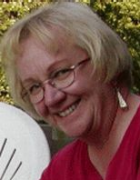Putting segregation to the numbers test

Published October 9, 2013 This content is archived.
Capping a two-day Baldy Center workshop called “Race, Space, and Exclusion,” a State University of New York at Albany professor and demographics expert delved into the difficulties of using statistics to study racial segregation in American communities.
Professor Nancy A. Denton’s presentation, titled “Race and Segregation in America: Continuities and Changes,” came before an audience of students and faculty that filled Room 106 of O’Brian Hall on Sept. 20.
Denton teaches in SUNY Albany’s School of Public Policy, serves as director of the Developmental Core of the Center for Social and Demographic Analysis and directs the Lewis Mumford Center for Urban and Regional Research. She also chairs SUNY Albany’s Department of Sociology and is associate editor of the journal City and Community. Her book American Apartheid: Segregation and the Making of the Underclass has been called a major contribution to the understanding of systematic segregation of African-Americans in the United States.
She said it can be a slippery task to measure residential segregation with precision. For example, a bar chart shows that from 1980 to 2010, residential segregation has been declining for African-Americans, holding steady for Hispanics and increasing slightly for Asian-Americans. But media headlines after the 2010 Census data arrived, she said, referred widely to the persistence of segregation. One reason, according to Denton, is that analysts looked at a greater number of metropolitan areas, including smaller cities, and incorporated a longer time frame, even looking back to the 1800s.
Studying individual neighborhoods also yields varying results.
“In the academic world, we frequently say that African-Americans are the most segregated,” Denton said. “But looking at neighborhoods, whites are the most segregated. Whites live in neighborhoods that are 79 percent white.”
Demographers are having to cope with a “data deluge,” she said, including overlapping statistical periods that only muddy the waters of analysis. She suggested that data should be studied only every five years: at the time of the Census, and at the midway point in the decade between Census surveys.
Another factor complicating demographers’ work in this field is the increasing diversity of the American population. “This population diversity is felt at very different levels and in very different ways in different parts of the country,” Denton said. “It makes it more difficult to talk about segregation, because we have multiple groups to contend with.” For example, it’s not useful to lump all persons of mixed racial heritage into a category called “multiracial,” yet the splintered data resulting from more specific identifications is not helpful, either.
The trend toward racial diversity is especially pronounced in people under 18, Denton said. “Older people and younger people are living in different worlds of racial diversity. We are facing a situation where the meaning of race itself may change. We have to cope with these things if we’re going to deal with how we’re going to study segregation,” she said.
Among the other challenges Denton addressed were the margins of error in data collection, which can be substantial; and the problem of defining geographical areas, such as suburbs.
As for the future, demographers are “beginning to use different tools and different ways of thinking about segregation than we have in the past.” They are also making use of longer time frames for study; focusing on the effects of segregation on organizations within metro areas; thinking about how neighborhoods change as their racial makeup shifts; and even, unusual for a statistics-heavy science, considering how the use of case studies might lead to new insights on the lived experience of residential segregation.
Her address was co-sponsored by the Baldy Center for Law and Social Policy and the UB Department of Sociology.